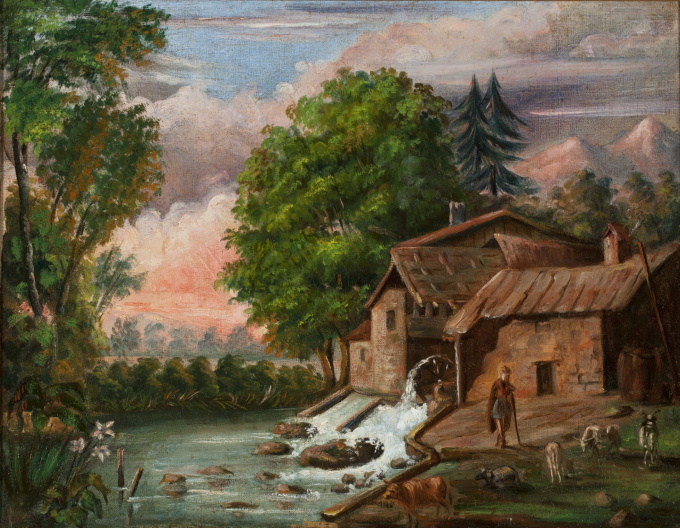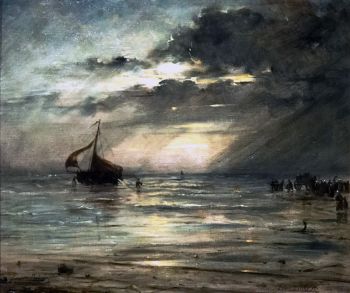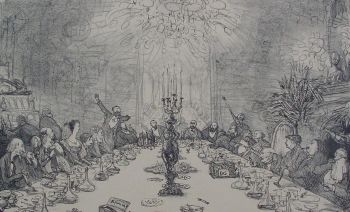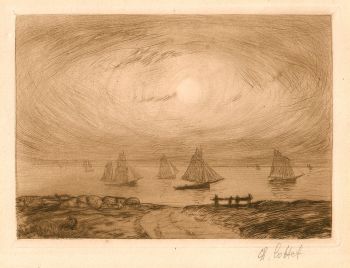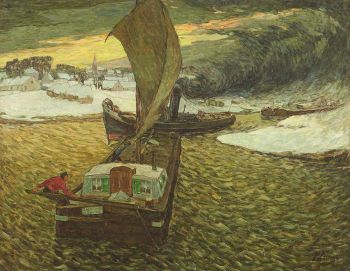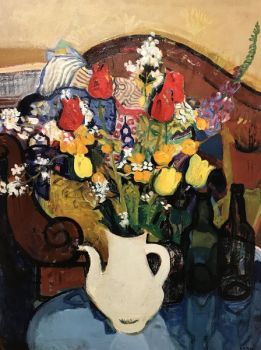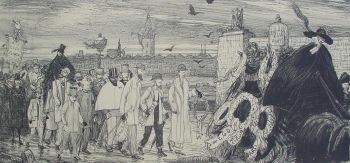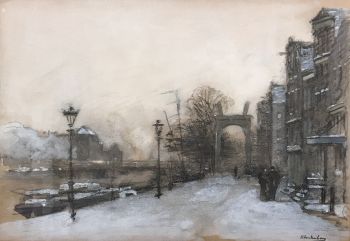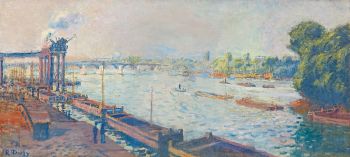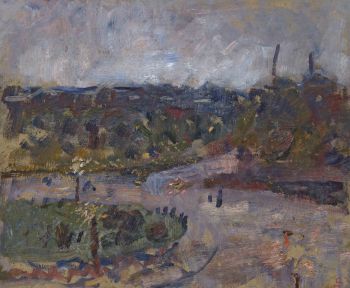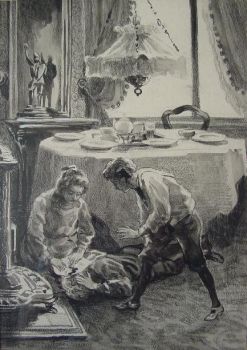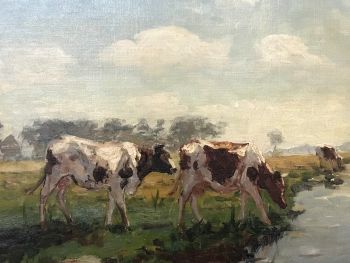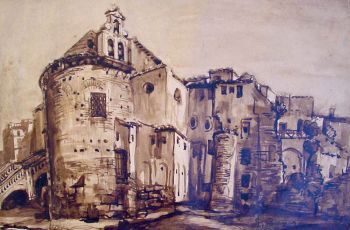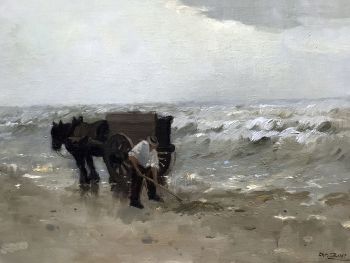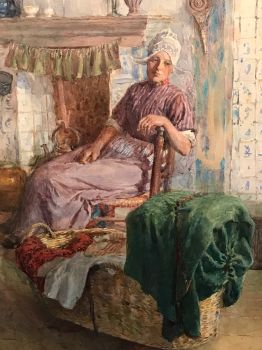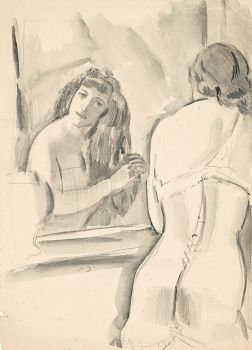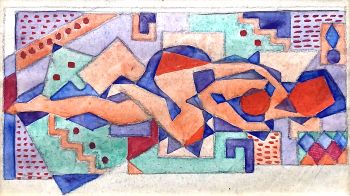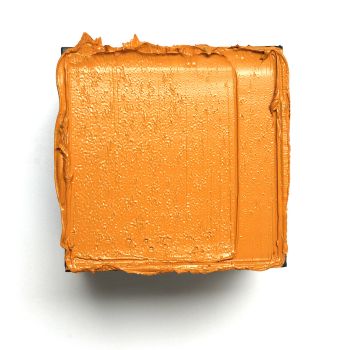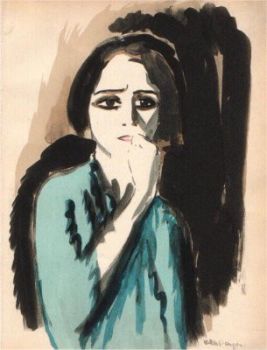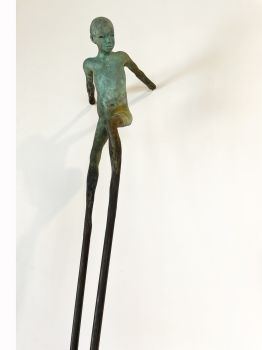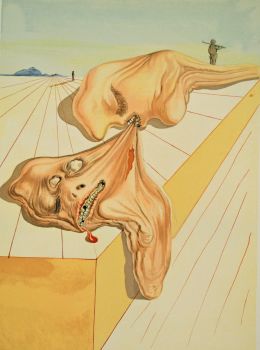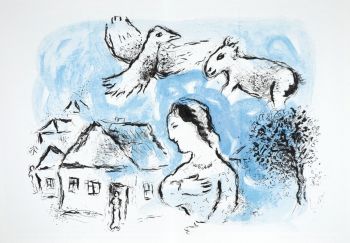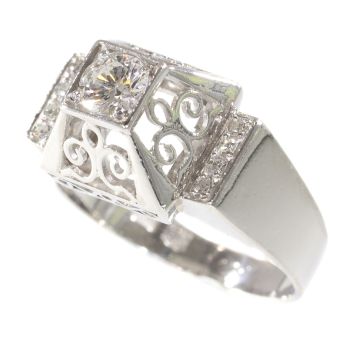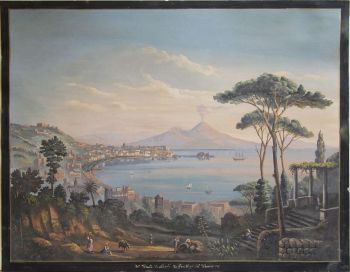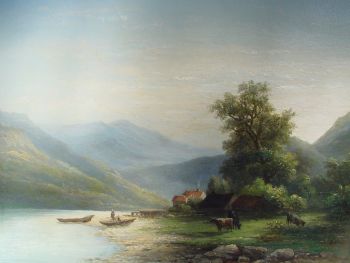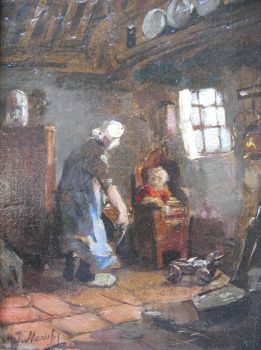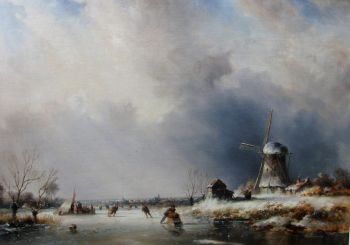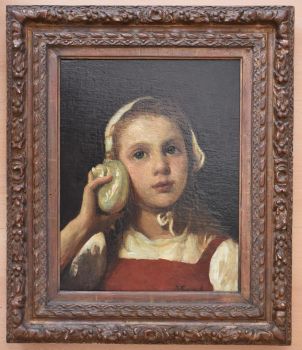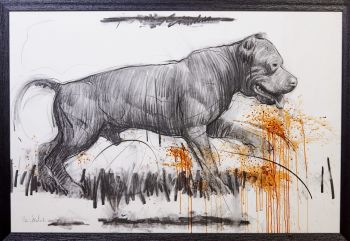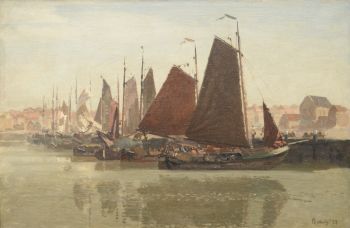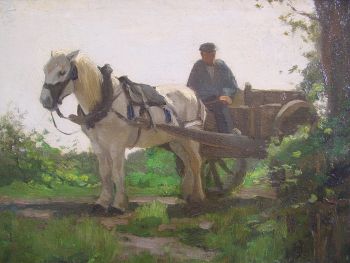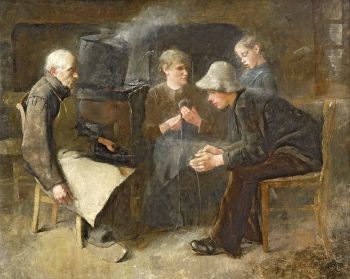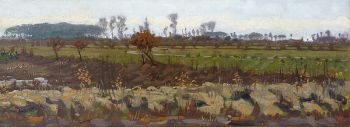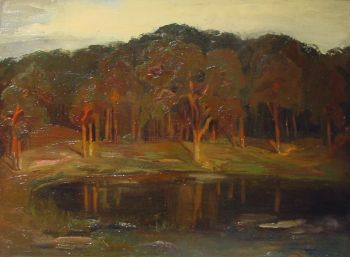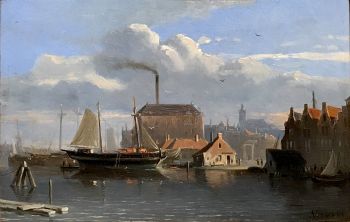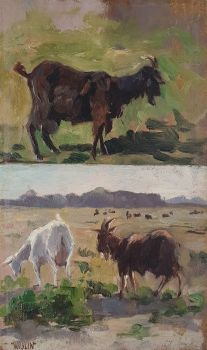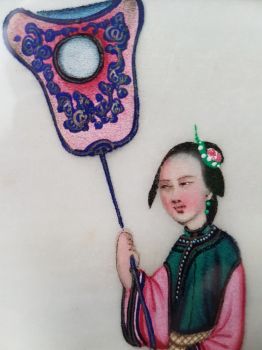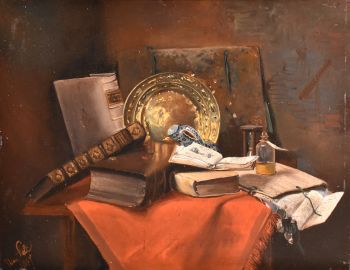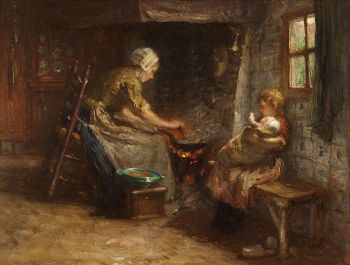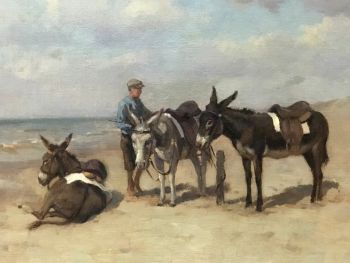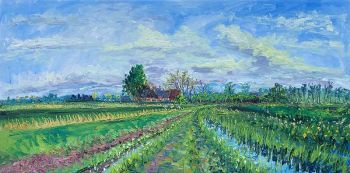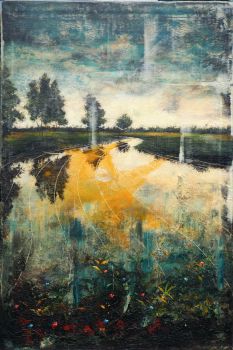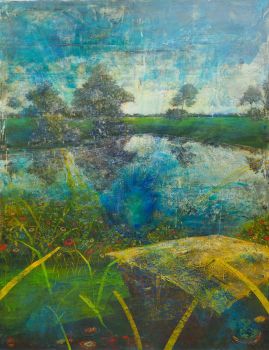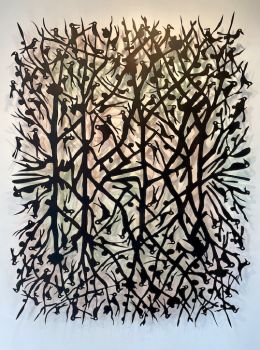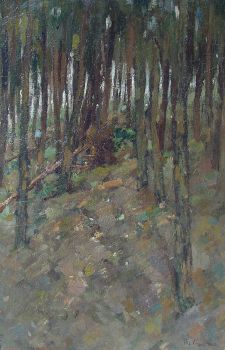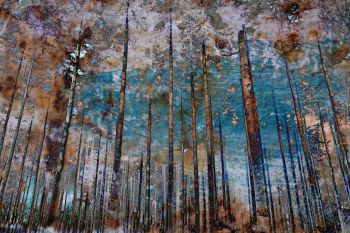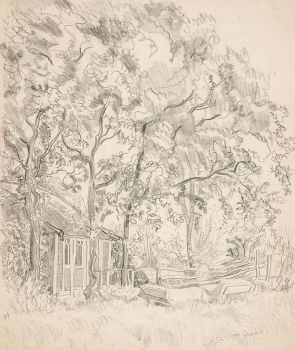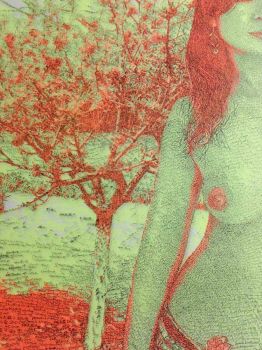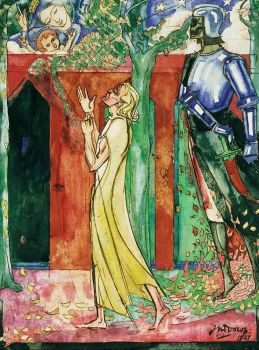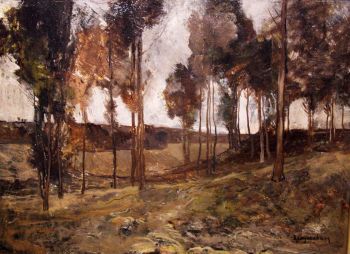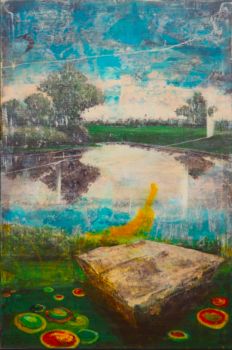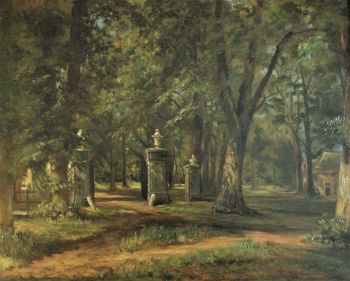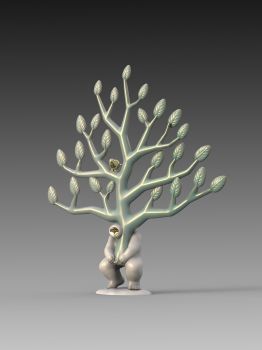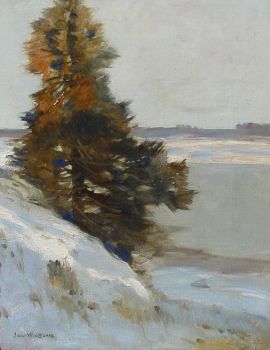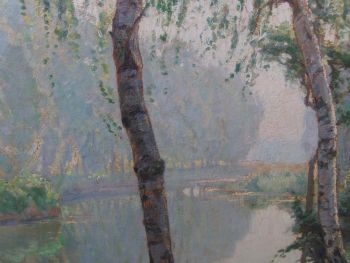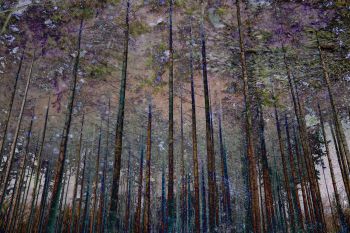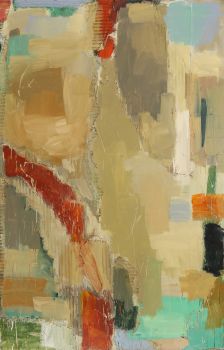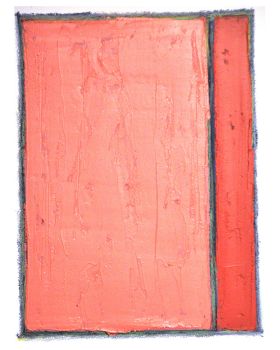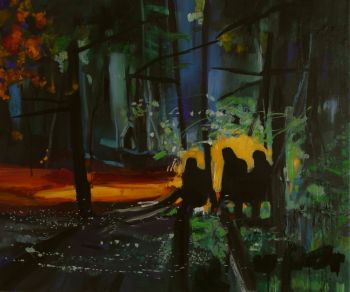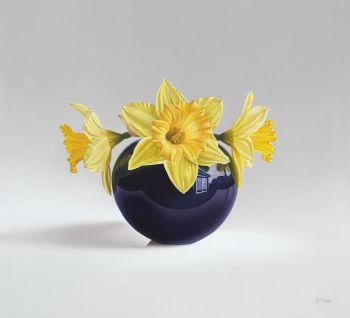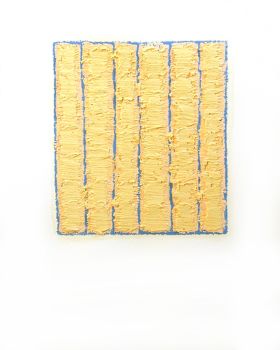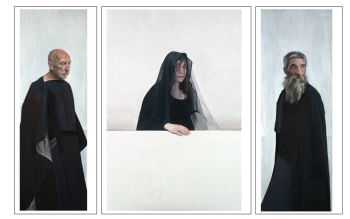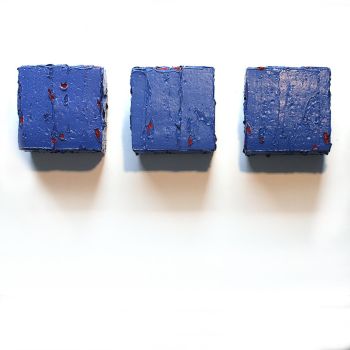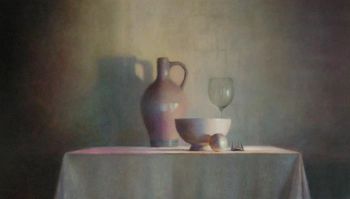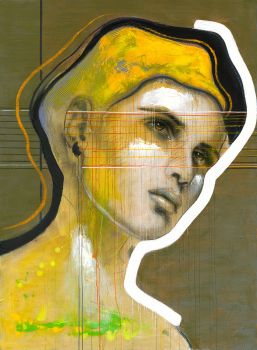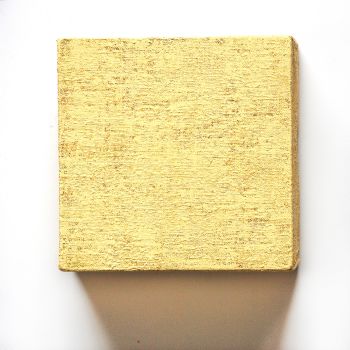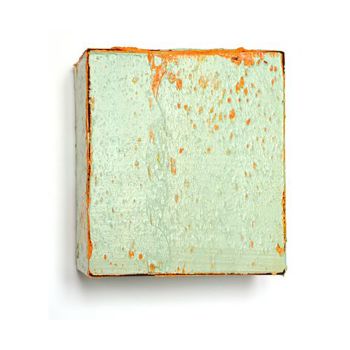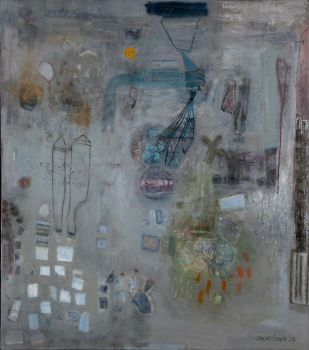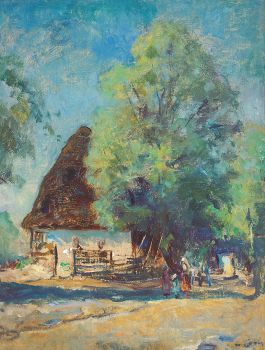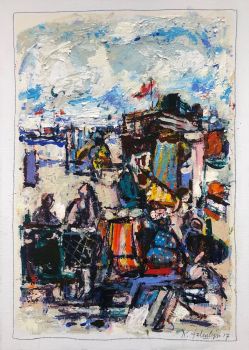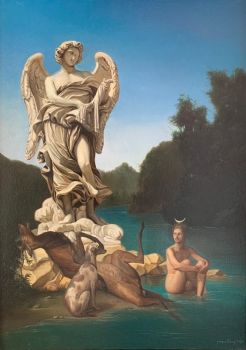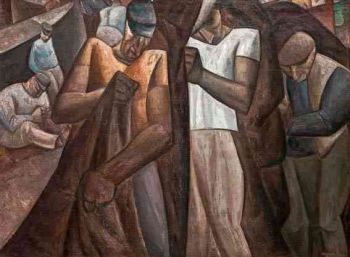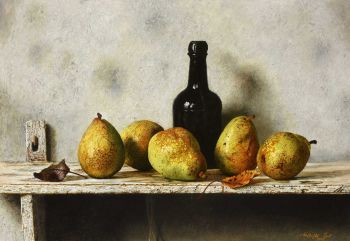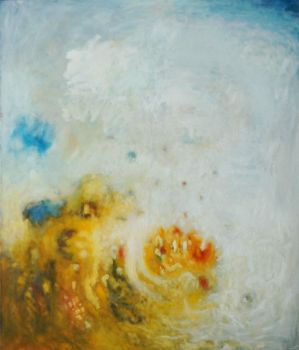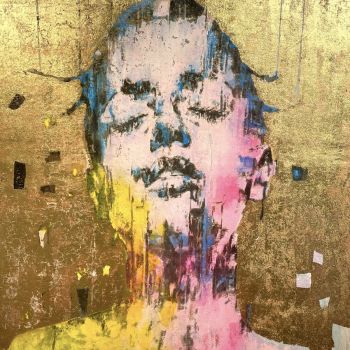Paysage avec moulin 1860
Paul Cézanne
TelaPittura a olioDipingere
28 ⨯ 35.50 cm
Attualmente non disponibile tramite Gallerease
- A proposito di opere d'arte1860 (possibly earlier) | Oil on canvas | 28 x 35.5 cm
“I point the way. Others will come after.”
-Paul Cézanne
‘Paysage avec Moulin’ by Paul Cézanne, now presented at TEFAF, shows a watermill in a wooded landscape with a shepherd and some sheep in the foreground, a subject reminiscent of Dutch Masters like Ruisdael and Hobbema. The work has probably been painted in Aix- en- Provence, where Paul Cézanne spent his youth and took his first drawing lessons. However, the mountains in the background are too high to be those from the Aix region and might establish a link to the village of Saint Saveur in the Hautes Alpes, where the Cézanne family originated from and where the young Paul may have spent some time during his vacations.
This painting might be the first oil painting made by Paul Cézanne and represent the first steps to be made by an artist who in the end achieved singular greatness and inestimable influence. The painting by its color and directness of execution appeals to a sensitivity shaped by Impressionism, and seems to represent the way forward for the genius to be.
Paul Cézanne is widely recognized as one of the founding fathers of modern art. As a painter he broke away from the impressionistic aesthetic in which painting was primarily considered as an immediate representation of visual perception. Instead Cézanne used the canvas to register his visual sensations analytically, applying series of discrete, methodical brushstrokes to construct a painting, creating almost architectural compositions with strong sculptural qualities. Cézanne often returned to his subject and each time he examined it from new angles, recombining the physical properties he observed, in paint, not trying to copy nature, but establishing “a harmony parallel to it”. In this way Cézanne was an inspiration to Braque and Picasso, who considered him the mentor of Cubism, and later on in this way Cézanne inspired abstraction.
Pablo Picasso called Paul Cézanne “the father of us all.”
After a life filled with reflection on the nature of perception, Cézanne stated: “We must not paint what we think we see, but what we see. Sometimes it may go against the grain, but this is what our craft demands." Clearly the insight of an experienced painter, who, through artistic struggle, had learned that nature is more complex than we experience at first sight and needs an extra mental effort to be painted truthfully. In the early beginnings of his career though, Paul Cézanne started off in a traditional manner, emulating the masters.
‘Paysage avec moulin’ has an outstanding provenance, which goes back to Paul Cézanne fils, that suggests the work has been cherished by the family of the great painter as one of his earliest works, perhaps his first oil painting. From Paul Cézanne fils ‘Paysage avec moulin’, was passed on to the legendary art dealer Ambroise Vollard, who quite possibly had the painting relined and put on a stretcher to have it framed properly. At the back of the canvas a stamp of Vollard can be found. Vollard, who prided himself to be the first one to have fully understood Cézanne’s greatness, kept the painting in his private collection and later left the painting to his brother.
Ambroise Vollard (3 July 1866 – 21 July 1939) was a French art dealer, who is regarded to be one of the most important dealers in French contemporary art at the beginning of the twentieth century. He is credited with providing exposure and emotional support to numerous then-unknown artists, including Paul Cézanne, Aristide Maillol, Renoir, Louis Valtat, Pablo Picasso, André Derain, Georges Rouault, Paul Gauguin and Vincent van Gogh. He was also an avid art collector and publisher.
Vollard established in 1893 his own art gallery at Rue Laffitte, then the center of the Parisian market for contemporary art. There Vollard mounted his first major exhibitions, buying almost the entire output of Cézanne, some 150 canvases to create his first exhibition in 1895. This was followed by exhibitions of the work of Manet, Gauguin and Van Gogh; These were then followed by a second Cézanne exhibition (1898), the first Picasso exhibition (1901) and Matisse exhibition (1904).
Provenance: Paul Cézanne Jr., Paris; Ambroise Vollard, Paris; Lucien Vollard, Paris; Mme Edouard Jonas, Paris; Hôtel Rameau, Versailles, Dec. 11, 1983, no. 138, ill.; Private collection
Literature: Rivière 1923: Le Maître Paul Cézanne, p. 195, Le Barrage. Venturi 1936b: Cézanne: Son Art, Son Oeuvre, 2 vols., no. 28, ill. vol. 2, Paysage romantique. Rewald 1996: The Paintings of Paul Cézanne, A Catalogue Raisonné, 2 vols., no. 17, ill. vol. 2, Paysage avec moulin - A proposito di opere artistaPaul Cézanne (1839 Aix-en-Provence, Francia-1906, Aix-en-Provence) è stato un pittore post impressionista francese nato ad Aix-en-Provence. Figlio di un ricco banchiere, scrisse poesie e ebbe tra i suoi amici Emile Zola, che lo persuase, contro la volontà del padre, a studiare arte a Parigi. Dal 1863 si unì al gruppo attorno a Manet, e le sue prime opere, influenzate da Delacroix, erano spesso scene erotiche o mitologiche. Divenne più strettamente associato agli impressionisti e fece amicizia con Pisarro, Monet e Renoir. Presto sviluppò uno stile molto personale. Vedeva gli oggetti naturali come costituiti da forme geometriche di base e il suo scopo era di rappresentarli solo con il colore, senza ombre o prospettive. Cézanne ha ottenuto i suoi effetti con colori limitati: prevalentemente blu, verdi e rossi. I suoi soggetti erano: paesaggi, nature morte, alcuni ritratti locali e bagnanti. Poiché il talento di Cézanne ricevette scarso riconoscimento, divenne amareggiato e si stabilì in Provenza nel 1878. Visse lì in isolamento per il resto della sua vita. Quando suo padre morì nel 1886, sposò Hortense Figuet, una modella con cui aveva vissuto in precedenza. Le sue ultime opere sono più violente e liriche. Nel 1985 viene allestita la sua prima mostra e successivamente Cézanne gode di una fama almeno moderata. Morì dopo una caduta. Fu un'importante fonte di ispirazione per Matisse, Picasso e Braque. Il movimento artistico del cubismo fu ispirato dalle sue teorie geometriche, ma la sua influenza si estese più ampiamente.
Artwork details
Categoria
Soggetto
Stile
Materiale e Tecnica
Colore
Related artworks
Johannes Christiaan Karel Klinkenberg
Cityscape Amsterdam1875 - 1925
Prezzo su richiestaGalerie Gabriëls
Jan Sluijters
Original illustration of Sluijters for the book: 'Laura's opstel'1881 - 1957
Prezzo su richiestaKunsthandel Pygmalion
Emile Bernard
Sketch of the surroundings of Tonnerre1888 - 1941
Prezzo su richiestaKunsthandel Pygmalion
Jean Metzinger
Cubist nude lying with bent leg, circa 19201910 - 1920
Prezzo su richiestaGallerease Selected
1 - 4 / 24Corstiaan Hendrikus de Swart
Mountain landscape with Lake1838 - 1900
Prezzo su richiestaKunsthandel Pygmalion
Hubert Vos
Ritratto di un punjabi nell'India britannica1898
Prezzo su richiestaZebregs & Röell - Fine Art - Antiques
H.J. van der Weele
Horse and carriage in landscape1850 - 1900
Prezzo su richiestaKunsthandel Pygmalion
Bernardus Johannes Blommers
Het bereiden van de maaltijd1870 - 1914
Prezzo su richiestaStudio 2000 Art Gallery
1 - 4 / 24Willem van Konijnenburg
Landscape in Limburg, the south of the Netherlands1868 - 1943
Prezzo su richiestaKunsthandel Pygmalion
1 - 4 / 24Rene Rietmeyer
TOKYO - Kudan House - January 2021 #022021
Prezzo su richiestaEuropean Cultural Centre Collection
Rene Rietmeyer
"PORTRAIT OF YAYOI KUSAMA JUNE 1999"1999
Prezzo su richiestaEuropean Cultural Centre Collection
Rene Rietmeyer
“NETHERLANDS BRABANT NOVEMBER 2000”2000
Prezzo su richiestaEuropean Cultural Centre Collection
Willem van Konijnenburg
Landscape in Limburg, the south of the Netherlands1868 - 1943
Prezzo su richiestaKunsthandel Pygmalion
1 - 4 / 24

